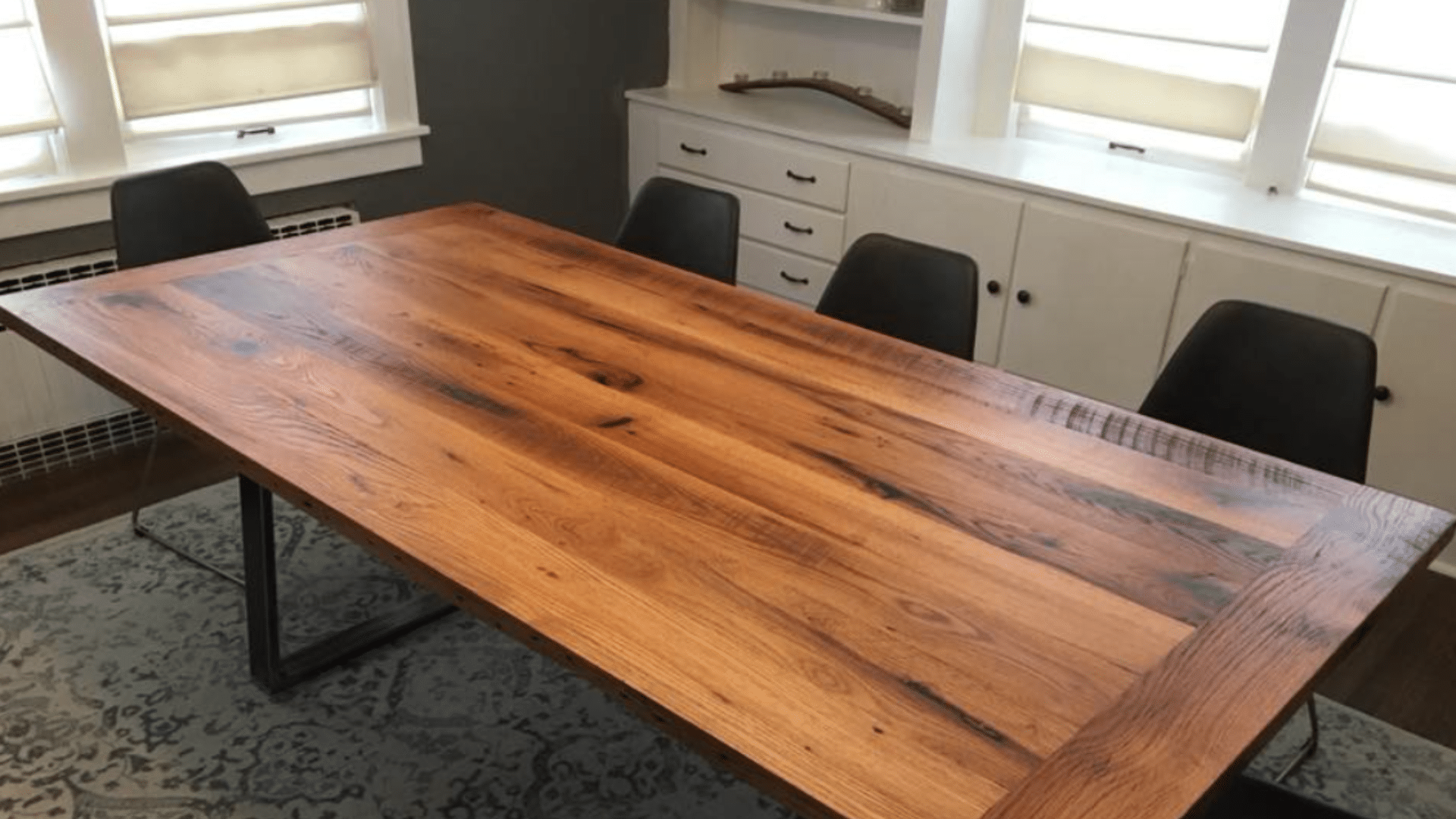Run your hand across a piece of furniture and wonder about the story behind the wood? Red oak might be more familiar than you think.
This strong, beautiful wood is found in homes across America, from kitchen cabinets to dining tables.
But just how tough is red oak? And why does its hardness matter for your next home project?
In this guide, we’ll find out what makes red oak special, how it compares to other woods, and why its hardness might be perfect for your needs.
Let’s examine the world of red oak and learn what makes this classic American wood stand the test of time
What is Red Oak?
Red oak is one of the most popular and versatile hardwoods in North America. Valued for its strength, workability, and warm appearance, it’s commonly used in flooring, cabinetry, and furniture making.
This hardwood belongs to the Quercus rubra species and is widely available, making it a top choice for both commercial and residential woodworking projects.
Origin
Native to North America, red oak is primarily harvested from the eastern and central United States. It grows abundantly in hardwood forests, contributing to its steady supply and affordability.
Common uses of red oak include:
- Solid and engineered hardwood flooring
- Interior trim and moldings
- Furniture frames and cabinetry
- Stair treads and handrails
- Veneer panels and decorative accents
Thanks to its relatively consistent texture and receptive grain, red oak also takes stains and finishes well, another reason it’s so widely favored.
Types of Red Oak Wood
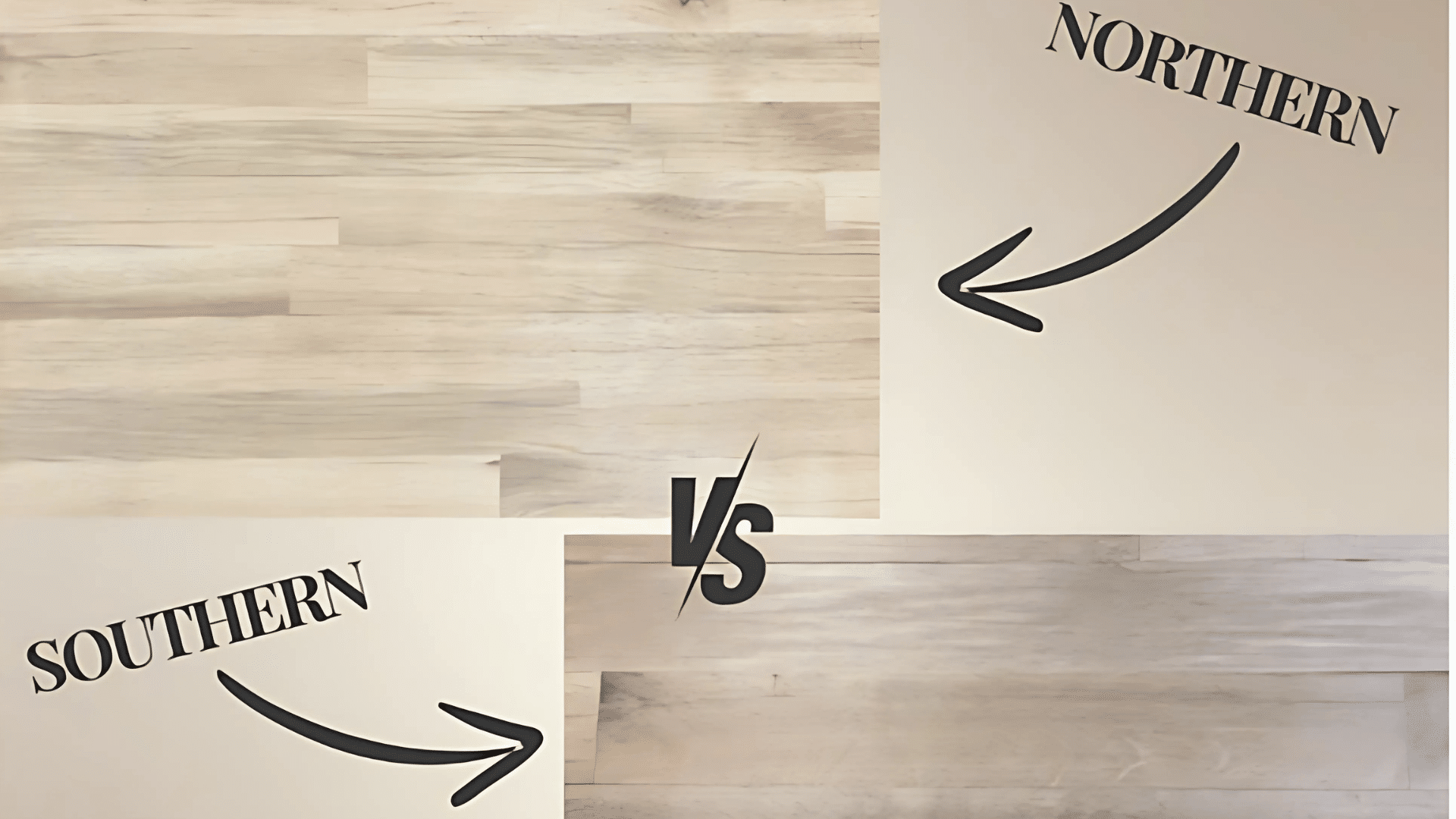
Though they belong to the same species, red oak trees vary based on the region where they grow, resulting in two primary commercial types:
Northern Red Oak
Northern red oak grows in cooler climates, which influences its density, grain structure, and overall performance in woodworking applications.
- Grows in cooler climates, resulting in slower growth.
- Typically features a finer, more uniform grain.
- Slightly denser and preferred for premium applications like furniture and cabinetry.
Southern Red Oak
In contrast, southern red oak thrives in warmer regions, resulting in faster growth and characteristics that differ noticeably from its northern counterpart.
- Grows faster in warmer climates.
- Coarser grain and lighter weight.
- More affordable, often used in large-scale flooring projects and structural uses.
Both types offer solid durability and aesthetic appeal, but their subtle differences can influence your project’s final look and feel.
How Hard is Red Oak?
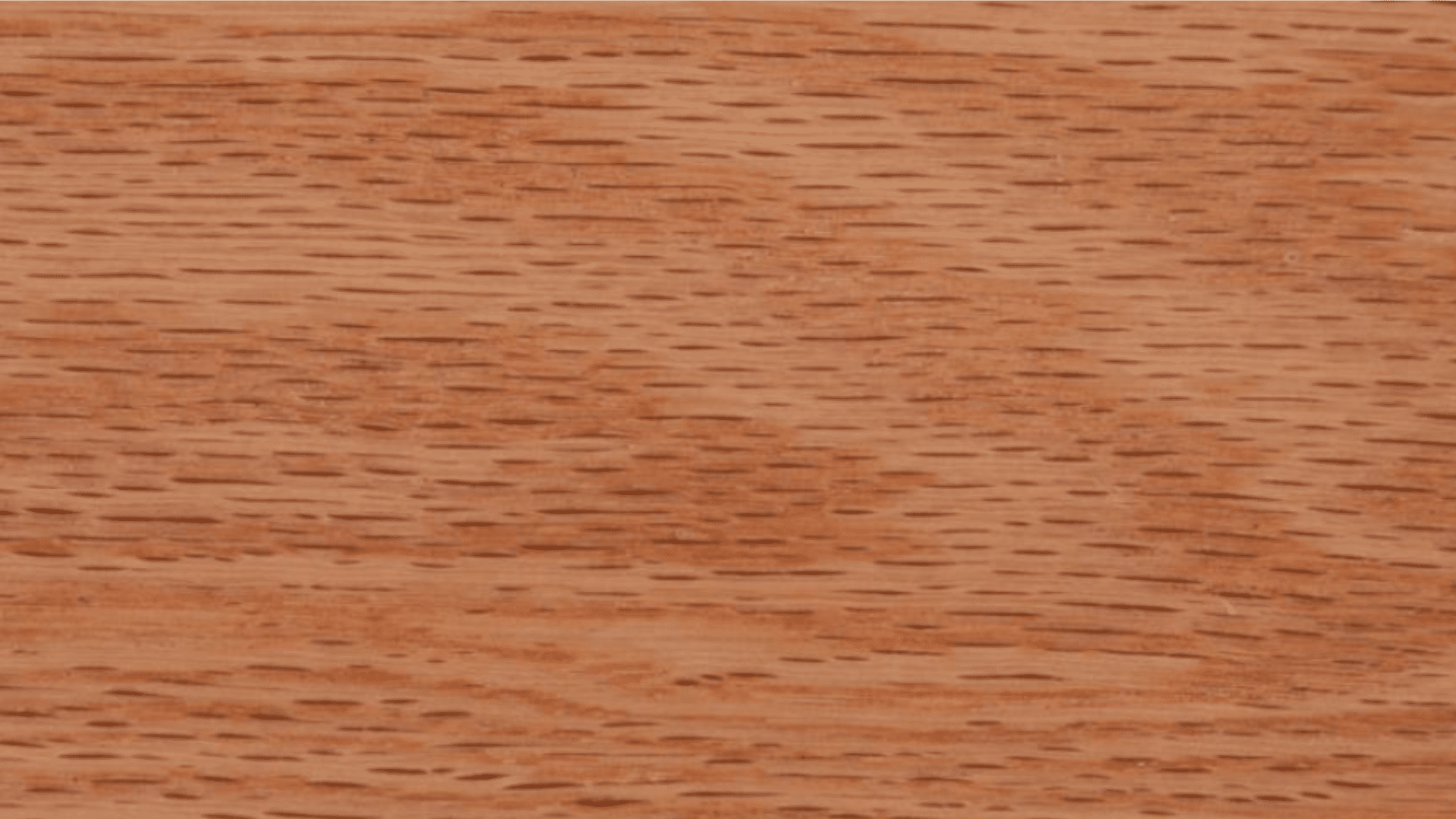
Red oak has a Janka hardness rating of 1290 lbf, placing it solidly in the category of durable domestic hardwoods. This rating means it takes 1,290 pounds of force to embed a steel ball halfway into the wood surface—a standard measure of resistance to denting and wear.
In practical terms, this level of hardness makes red oak:
- Strong enough for high-traffic areas like hallways and living rooms.
- A solid choice for furniture, cabinets, and staircases.
- Easy to work with using standard woodworking tools.
- Less likely to splinter or chip under everyday use.
It offers a balance that makes it popular among professionals and DIYers alike, tough, but not too tough to handle.
Red Oak vs Other Common Woods
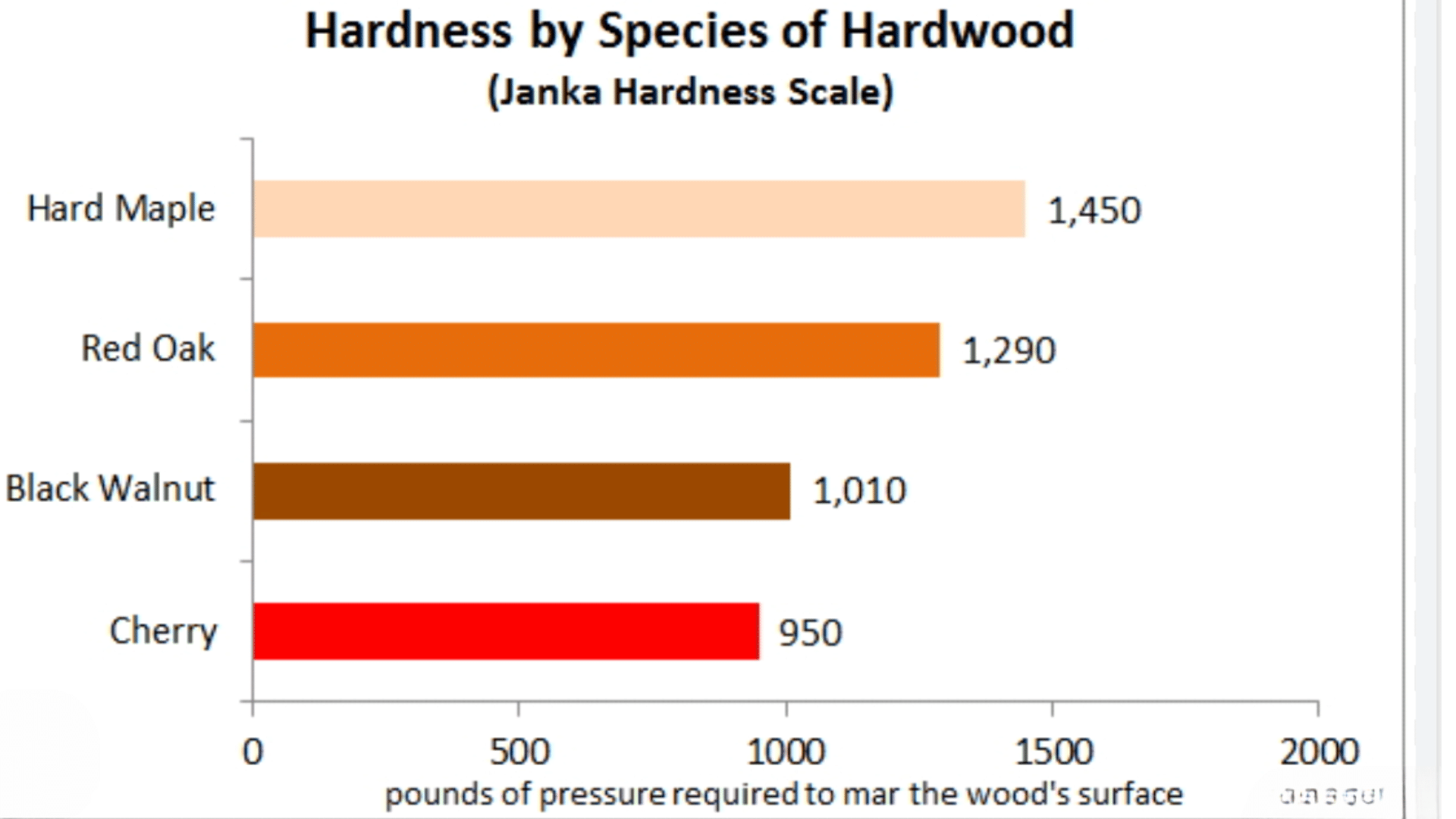
When choosing wood for flooring or furniture, hardness plays a big role in how well it will withstand everyday use.
Red oak is often compared to other hardwoods and softwoods to evaluate its performance and value.
| Wood Species | Janka Hardness (lbf) | Key Characteristics |
|---|---|---|
| Red Oak | 1290 | Balanced strength and workability; widely used for flooring and furniture. |
| White Oak | 1350 | Slightly harder and more moisture-resistant than red oak; excellent for outdoor use. |
| Hickory | 1820 | Extremely hard and dense; highly durable but more difficult to work with. |
| Hard Maple | 1450 | Very strong and wear-resistant; ideal for high-traffic areas and sports flooring. |
| Cherry | 950 | Softer hardwood, rich color, easy to shape, better for fine furniture. |
| Pine (Southern Yellow) | 870 | Softwood; affordable and easy to work with, but dents and scratches easily. |
Pros and Cons of Red Oak’s Hardness
Red oak’s hardness is one of the reasons it has remained a top choice in woodworking and construction for decades.
Pros
Red oak’s strength strikes a practical balance, making it a favorite among builders, woodworkers, and homeowners alike. Here are some of the standout advantages:
- Durable but still workable: Red oak offers the toughness needed for daily wear and tear without being overly difficult to cut, sand, or nail.
- Widely available and cost-effective: Its abundance in North America makes it accessible and budget-friendly compared to harder exotic woods.
Cons
While red oak is a reliable hardwood, it’s not without a few limitations, especially when compared to tougher or more exotic alternatives.
- Not as hard as exotic woods: While durable, red oak doesn’t match the density of woods like Brazilian cherry or hickory, which offer higher resistance to dents and scratches.
- May dent or scratch with heavy use: If not properly maintained, red oak can show wear over time in high-impact environments, like homes with large pets or heavy furniture.
Overall, red oak’s moderate hardness makes it a practical and popular choice for a wide variety of applications, balancing toughness with ease of use.
Tips for Working with Red Oak
Working with red oak is generally straightforward, but following a few smart techniques can help you get the best results, you’re cutting, staining, or maintaining it over time.
Use Sharp Carbide-Tipped Blades: Red oak’s density can wear down standard steel blades quickly. For smoother cuts and less tear-out, use sharp carbide-tipped saw blades or router bits.
Sand with the Grain: Always sand in the direction of the grain to avoid scratches. Start with medium grit (like 120) and finish with fine grit (180–220) for a clean surface.
Choose a Pre-Stain Conditioner: Red oak absorbs stain unevenly due to its open grain. Apply a pre-stain wood conditioner to help achieve a consistent, professional-looking finish.
Seal with a Durable Topcoat: Seal the wood with a clear polyurethane or oil-based finish to protect against dents, spills, and wear. This extends the life and appearance of red oak surfaces.
Clean and Maintain Regularly: Keep red oak floors and furniture looking great by dusting frequently and using wood-safe cleaners. Avoid harsh chemicals and keep moisture to a minimum.
Is Red Oak Hard Enough for Your Project?
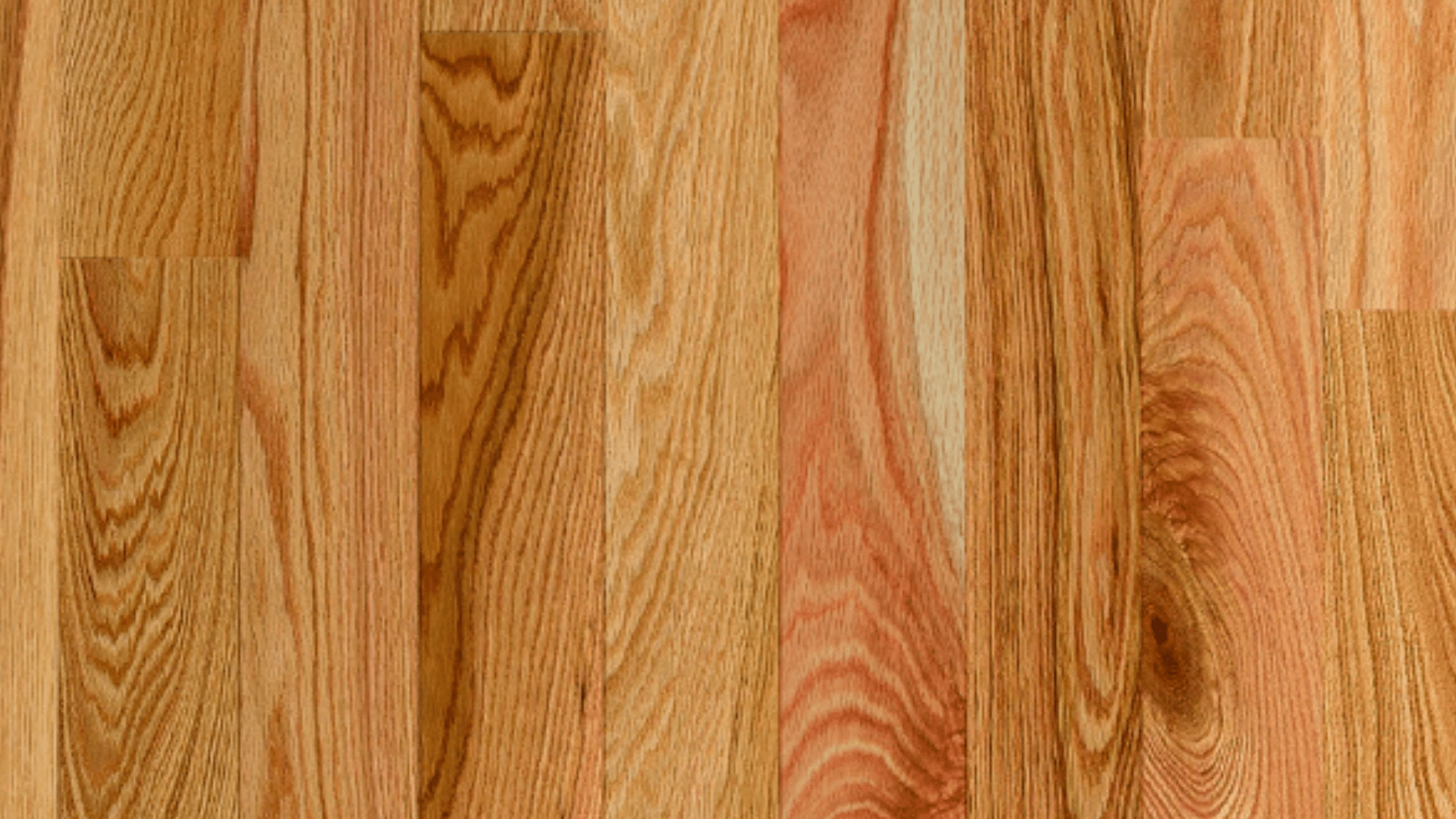
Red oak’s balanced hardness makes it a dependable choice for many woodworking and construction needs, but the right wood ultimately depends on where and how it will be used. Here’s how to evaluate whether red oak fits your project requirements.
Guide for Choosing Wood by Application:
- Flooring: Red oak is a favorite for residential floors. Its 1290 Janka rating provides enough resistance for normal foot traffic, and it handles sanding and refinishing well over time.
- Furniture: It’s a solid option for tables, chairs, and shelving. It’s easy to shape and strong enough to withstand everyday use.
- Cabinetry: Red oak’s open grain accepts finishes beautifully, making it a great choice for cabinets that need both durability and a customizable look.
Other Important Considerations:
- Foot Traffic: For homes with light to moderate foot traffic, red oak holds up well. In high-traffic areas or commercial spaces, a harder wood may offer more longevity.
- Pets: While red oak is reasonably tough, claws from larger pets can cause dents and scratches. Consider using rugs or protective coatings in pet-prone areas.
- Moisture: Red oak is not ideal for high-moisture environments like bathrooms or basements. If moisture resistance is a top concern, white oak or engineered alternatives may be better suited.
In summary, red oak is hard enough for most interior uses, offering a great mix of strength, style, and flexibility. Just weigh the conditions of your specific space before making the final call.
Conclusion
With a Janka hardness rating of 1290 lbf, red oak strikes a reliable balance between strength and workability.
It’s tough enough for everyday use, yet easy to work with, making it a go-to hardwood for flooring, furniture, and cabinetry. But hardness isn’t the only factor to consider.
Grain pattern, color, finish compatibility, and overall cost all play a role in choosing the right wood for your project. Red oak’s warm appearance, availability, and affordability make it a smart, versatile option.
Ready to get started? Visit a local supplier to explore red oak in person and find the perfect fit for your project.

